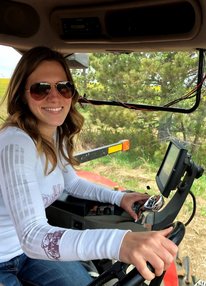Leanna Leverich Nigon's doctoral thesis defense seminar
LAAS PhD candidate advised by Profs. Daniel Kaiser and Seth Naeve
Spatial variability has long been acknowledged as being an inherent element of soil science and agricultural systems. This body of work was split into two parts and addressed two important challenges in Minnesota cropping systems influenced by spatial variability: 1) potassium (K) fertility and clay mineralogy, and 2) optimal seeding density in soybean. In Part 1, on-farm field trials, lab studies, and historical and spatial data were used to assess soil attributes influencing K fertility. Soil texture, CEC, and other cations influenced K retention in coarse textured soils. Though it was not directly measured, clay mineralogy was also suspected to be influencing K retention in the sandy soils. Looking at clay mineralogy more specifically, Part 1 studies found that smectite and illite clay minerals could be used to refine K critical levels for K recommendations in corn. Building from these results, a workflow was also presented for employing supervised regression to predict clay mineral abundances across the state of Minnesota. In Part 2, on-farm trials, historical data, and spatial data were also used to assess optimal soybean seeding densities. Ultimately, the studies found there are many optimal seeding densities for any particular area (0.4 ha zone) of the field, rather than one best seeding density. The likelihood of response was characterized for each site-year and a random forest model was used to predict zones that would respond to seeding density with 74.5% accuracy. This body of work serves as an example of embracing spatial aspects in two common areas of interest to growers.

Leanna Leverich Nigon, LAAS PhD candidate advised by Profs. Daniel Kaiser and Seth Naeve
